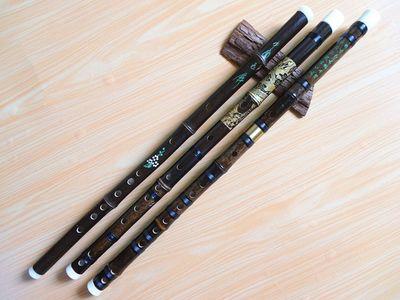How to calculate the distance between the holes of the flute
We all know that the flute has many holes, so do you know the meaning of the distance between the holes of the flute?
The flute is made using the principle of air vibration and air column resonance. The pressure of the flowing gas decreases, and the faster the flow rate, the lower the pressure.

When we blow the flute, the gas enters the interior of the flute from the edge of the blowing hole, and makes a vortex motion at the blowing hole, so that the gas pressure inside the blowing hole is reduced, so the gas at the end of the flute moves toward the blowing hole (this speed is very fast) Yes, think of the air as a very elastic thing, which is actually the case), there is a backlog of sound at the blowing hole, and this movement causes the pressure at the blowing hole to increase, but the air continues to blow (physically). It is called excitation), and pushes the gas to the tail of the flute, and then the pressure at the blowing hole decreases again, and the gas moves to the blowing hole again.
Don't simply imagine the vibration as such a mechanical movement, so that the form of air vibration inside the flute is a standing wave. But the air is not a transverse wave, but a longitudinal wave. The standing wave of the longitudinal wave is relatively abstract. The longitudinal wave inside the flute vibrates along the flute. It is like this: Suppose there are a b c d e f... At the ace position, the air is sparse and the pressure is small, and the bdf position is dense and the pressure is strong; at the next moment, the air at the ace position becomes dense and the pressure is strong, and the air at the bdf two points becomes sparse and the pressure is small, and so on. , the cycle changes. Looking at any point, the air in this place is alternately dense and dense. This is the real vibration in the flute. See the schematic diagram. How does the membrane of the flute vibrate? After understanding the real standing wave inside the flute, this question is easy to understand. The air under the flute membrane also changes in density and density alternately, so that the pressure changes alternately, while the pressure outside the flute membrane is constant, which causes the vibration of the membrane. When the pressure inside the flute membrane is strong, the flute membrane moves to the outside world; when the pressure inside the flute membrane is small, the flute membrane moves downward, which is the vibration of the flute membrane.
However, there are other problems with the vibration of the diaphragm. Because the air movement inside the flute has resistance, the gas close to the inner wall of the flute vibrates slowly because it is resisted by the inner wall of the flute. Just like river water, the closer to the shore, the slower the flow of water. The gas in the middle of the flute has no resistance, and the vibration is fast (strictly speaking, there is resistance, because the gas close to it must be closer to the inner wall of the flute, and the speed of this part of the gas is slower than the speed of the middle gas, so it has a certain effect on the gas in the middle. resistance). This is one reason to make the inner wall of the flute very smooth. When the inner wall of the flute
When the air resistance is too large, it will affect the sensitivity of pronunciation. Strictly speaking, there is not only one standing wave inside the flute, but many standing waves, so the sound played by the flute is not a simple frequency. The standing wave in the middle part of the flute plays a decisive role, but this is not the sound of the flute. It is the main reason for the mixing of many frequency sounds, and the main reason is people's tone of voice.
The wind speed at different positions in the human mouth is different, which causes many standing wave vibrations inside the flute. Theoretically speaking, how many speeds there are in your mouth, how many standing waves there are in the flute, then how many frequencies are there in the sound at this time. How do overtones come from? Overtones are relatively pure sounds, and there are few other frequency components in overtones. The reason is that when overtones are blown, the air is very thin, and the airflow speed of each part in the air is very close, so the air is blown out. The frequency sounds relatively single, which is the overtone. The speed of the breath determines the level of the dominant frequency.
 渝公网安备 50010702504639号
渝公网安备 50010702504639号